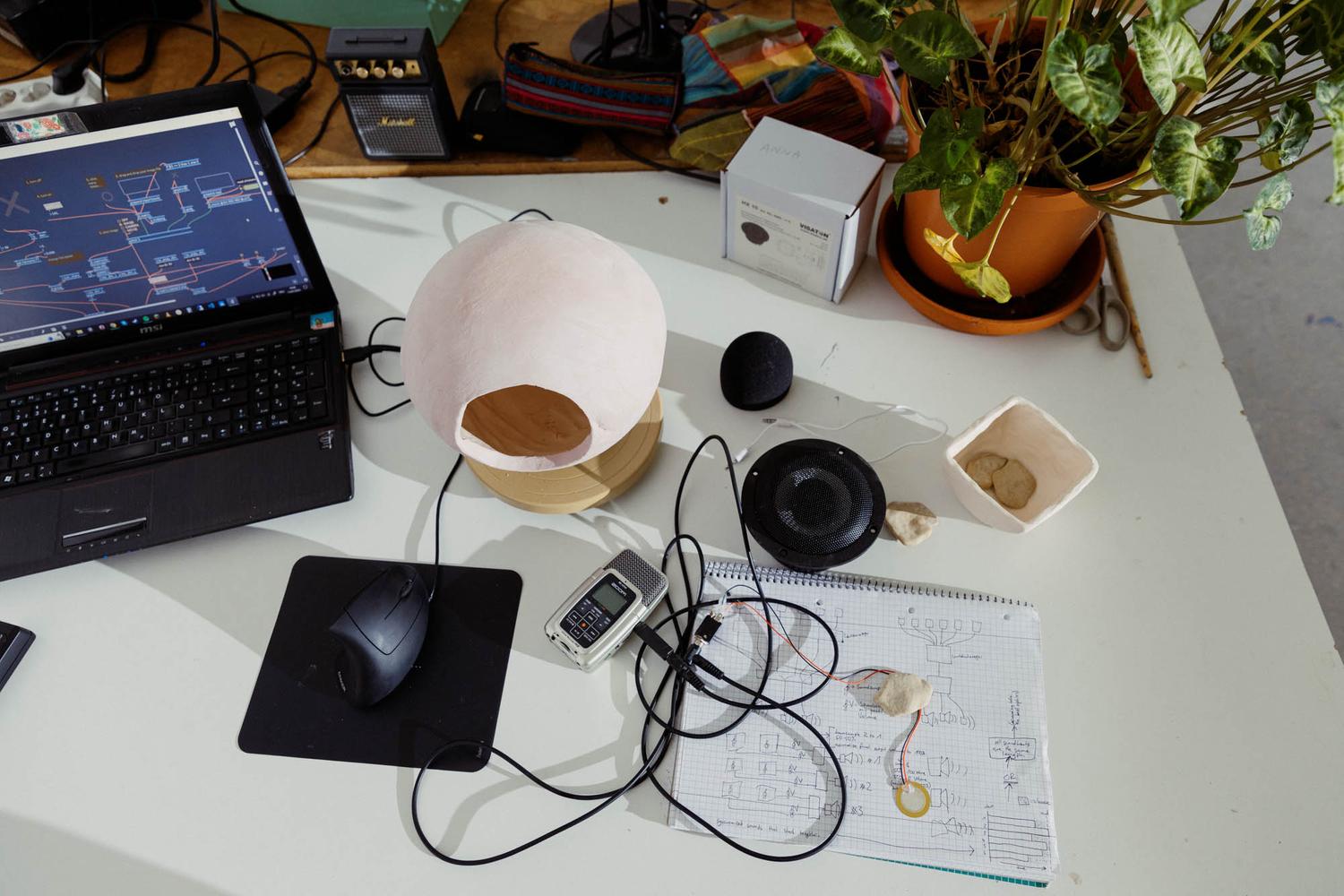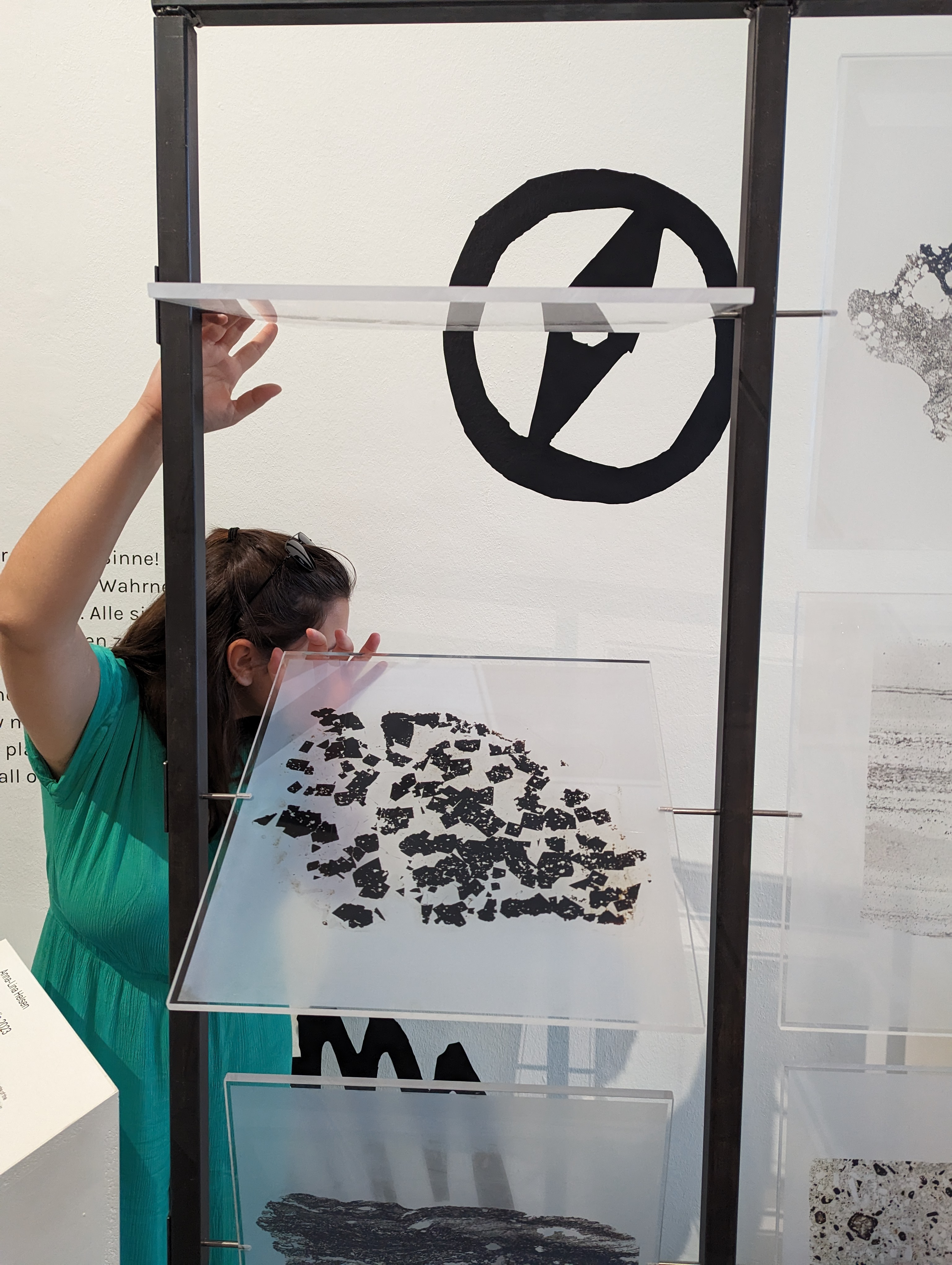.png)

Photo: Scheiber Pötter

.png)


Interactive Sound Installation
Exhibited at the National History Museum Karlsruhe
An interactive sound installation, combining technology, minerals and rocks, metals and clay speakers to create a playful exploration of soundscapes and the history of the earth.
The interactive installation “Sonos Mineralis” lets people remix their
own version of time and place throughout earth’s history. Six different
types of rocks are sonified, one soundtrack for each rock. By rotating
the image plates, users can mix together their own soundscape. The
sound is played out of slip-cast speakers made out of clay, enhancing
the experience with a unique sound.
Six cross-sections of different rocks were chosen and high-resolution
photographs of them were taken (with kind support from the Natural
history Museum of Karlsruhe). Each rock came to the surface in a
different manner such as sediment deposition or lava explosions
catapulting the minerals up from different levels of the earth’s mantle.
These images were then divided up each into a fine grid using
“MaxMSP”, and average brightness-values for each individual cell
were calculated. The values were then mapped against sound-values
and played through, from left to right across the rows and cells,
creating specific soundtracks for each image. For the programming in
MaxMSP I kindly received support from Kimin Han.
Turning an image-plate controls the volume of the soundtrack
correlating to the image printed onto the acrylic glass of each image
plate. The users are invited to play with the installation, turning the
images and trying to identify which elements of the sounds come from
which image or rock, and remixing all of it together into their very own
soundscape.
The volume is controlled by AS5600 magnetic rotary position sensor,
built into the sides of the metal frame by me and programmed by
Kai-Uwe Hermann.
Kindly supported by the UNESCO City of Media Arts Karlsruhe with
the “Project Funding Program for Media Art 2022” and part of the
exhibition “Media Art is Here 2023”. Many thanks also to the Natural
History Museum and Dr. Spiske, as well as to Dieter Sellin for his
advice on speakers!
Link to the soundtracks: SOUNDCLOUD